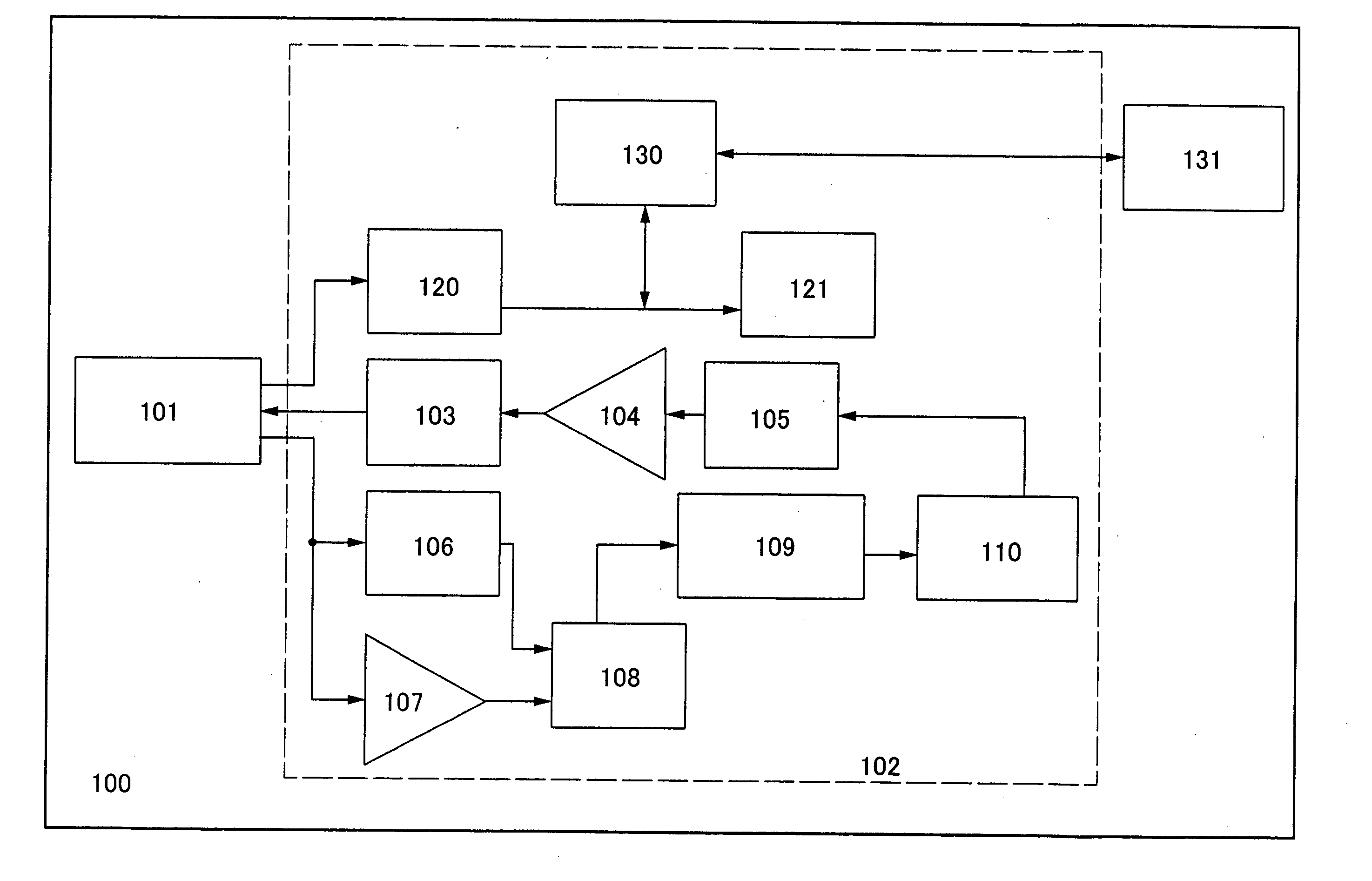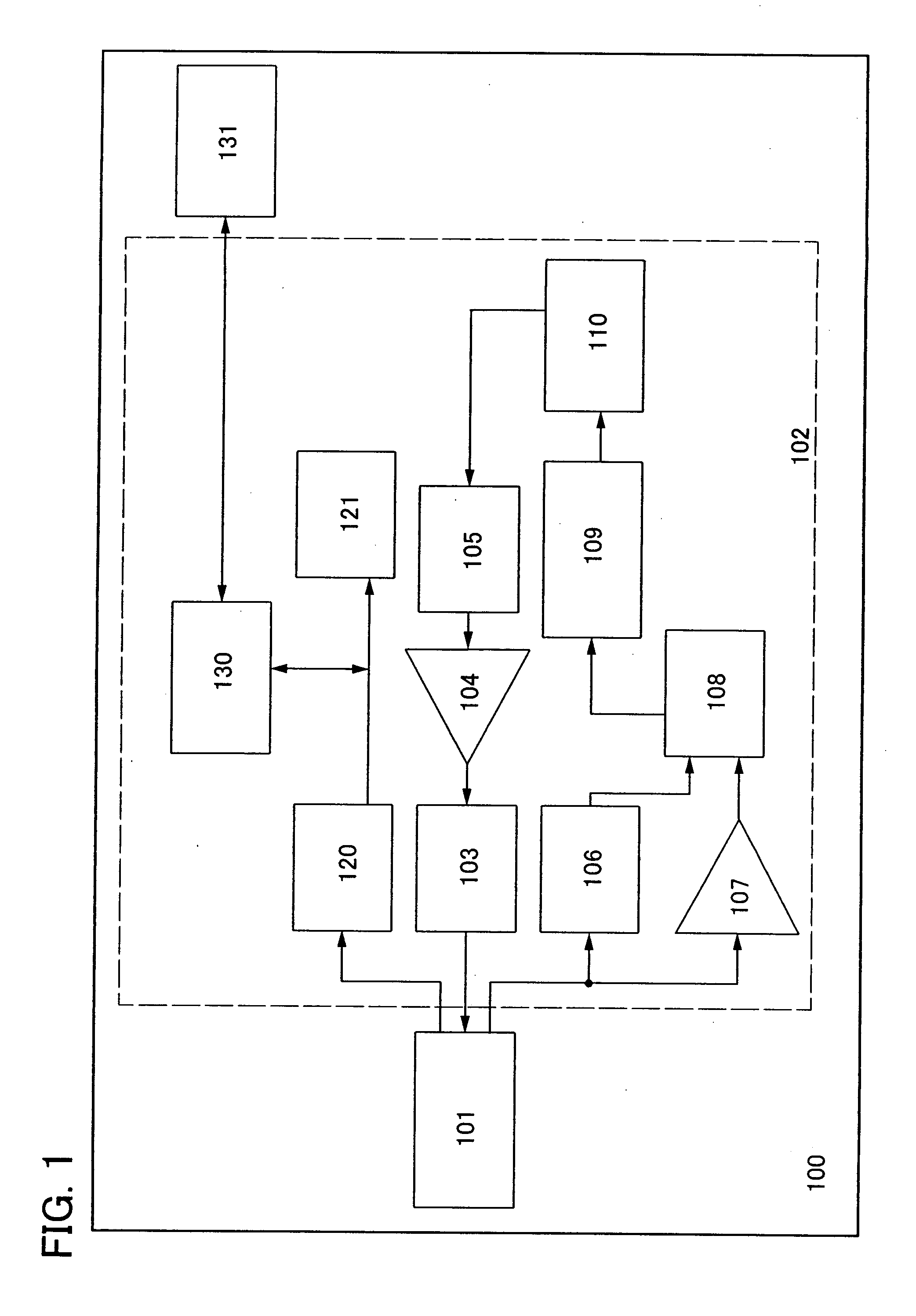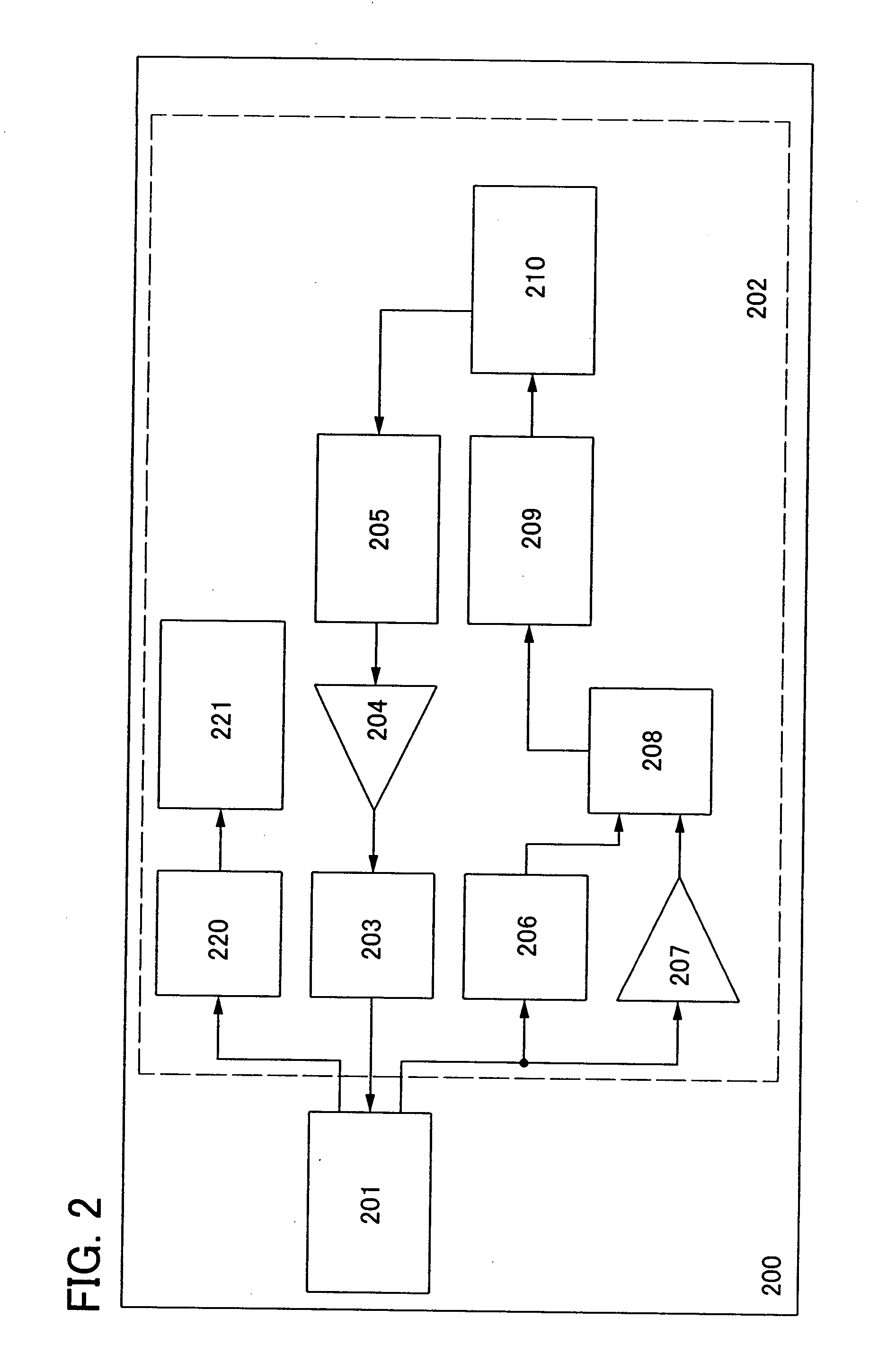Semiconductor device and method for operating the same
- Summary
- Abstract
- Description
- Claims
- Application Information
AI Technical Summary
Benefits of technology
Problems solved by technology
Method used
Image
Examples
embodiment mode 1
[0060] First, a schematic structure of a semiconductor device in accordance with Embodiment Mode 1 of the invention is briefly described.
[0061] The semiconductor device includes an antenna circuit, a signal processing circuit which processes a signal received by the antenna circuit, and a battery which stores power supplied.
[0062] The antenna circuit includes an antenna which receives a signal.
[0063] As the shape of the antenna in the antenna circuit, various types can be employed. For example, the shape such as a so-called dipole antenna, a loop antenna, a Yagi antenna, a patch antenna, or a minute antenna can be employed. In the case where the antenna is formed over the substrate as a transistor included in the signal processing circuit, the shape of the antenna is preferably a minute loop antenna, a minute dipole antenna, or the like.
[0064] In addition, the antenna circuit may include a unit for changing the frequency of the signal received. For example, when the shape of the...
embodiment mode 2
[0109] In a semiconductor device in accordance with Embodiment Mode 2 of the invention, a structure in which the semiconductor device in accordance with Embodiment Mode 1 of the invention is provided with a so-called booster antenna is shown.
[0110] First, a schematic structure of the semiconductor device in accordance with Embodiment Mode 2 of the invention is briefly described.
[0111] The semiconductor device includes an antenna circuit, a signal processing circuit which processes a signal received by the antenna circuit, and a battery which stores power supplied.
[0112] Note that the antenna circuit includes a first antenna portion and a second antenna portion. The first antenna portion includes a first antenna coil and the second antenna portion includes a second antenna coil having a longer outside diameter than that of the first antenna coil. The transmission and reception frequency of the first antenna portion tunes to the transmission and reception frequency of the second an...
embodiment mode 3
[0137] In this embodiment mode, an example of a manufacturing method of the semiconductor device shown in the aforementioned embodiment modes is described with reference to the drawings.
[0138] First, a release layer 603 is formed over one surface of a substrate 601 with an insulating film 602 interposed therebetween. Sequentially, an insulating film 604 functioning as a base film and a semiconductor film 605 (e.g., a film including amorphous silicon) are stacked (see FIG. 11A). Note that the insulating film 602, the release layer 603, the insulating film 604, and the amorphous semiconductor film 605 can be sequentially formed.
[0139] The substrate 601 is selected from a glass substrate, a quartz substrate, a metal substrate (e.g., a ceramic substrate or a stainless steel substrate), a semiconductor substrate such as a silicon substrate, or the like. In addition, a substrate made of polyethylene terephthalate (PET), polyethylene naphthalate (PEN), polyether sulfone (PES), acryl, or ...
PUM
 Login to View More
Login to View More Abstract
Description
Claims
Application Information
 Login to View More
Login to View More - R&D
- Intellectual Property
- Life Sciences
- Materials
- Tech Scout
- Unparalleled Data Quality
- Higher Quality Content
- 60% Fewer Hallucinations
Browse by: Latest US Patents, China's latest patents, Technical Efficacy Thesaurus, Application Domain, Technology Topic, Popular Technical Reports.
© 2025 PatSnap. All rights reserved.Legal|Privacy policy|Modern Slavery Act Transparency Statement|Sitemap|About US| Contact US: help@patsnap.com



